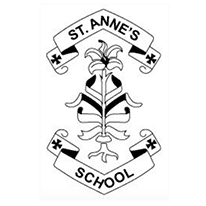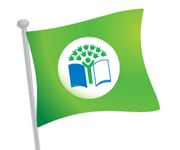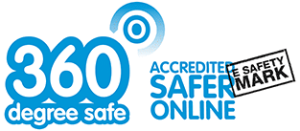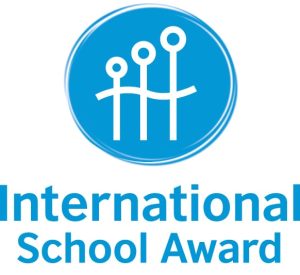Reading: The National Curriculum
The programmes of study for reading at key stages 1 and 2 consist of two dimensions:
- word reading
- comprehension (both listening and reading)
It is essential that teaching focuses on developing pupils’ competence in both dimensions; different kinds of teaching are needed for each.
Skilled word reading involves the speedy working out of the pronunciation of unfamiliar printed words (decoding) and the speedy recognition of familiar printed words. Underpinning both, is the understanding that the letters on the page represent the sounds in spoken words. This is why phonics should be emphasised in the early teaching of reading to beginners (ie unskilled readers) when they start school.
Good comprehension draws from linguistic knowledge (in particular of vocabulary and grammar) and on knowledge of the world. Comprehension skills develop through pupils’ experience of high-quality discussion with the teacher, as well as from reading and discussing a range of stories, poems and non-fiction. All pupils must be encouraged to read widely across both fiction and non-fiction to develop their knowledge of themselves and the world they live in, to establish an appreciation and love of reading, and to gain knowledge across the curriculum. Reading widely and frequently, increases pupils’ vocabulary because they encounter words they would rarely hear or use in everyday speech. Reading also feeds pupils’ imagination and opens up a treasure house of wonder and joy for curious young minds.
By the end of their primary education, it is essential that all pupils are able to read fluently, and with confidence, in any subject in their forthcoming secondary education.
Phonics
By ensuring high-quality phonics teaching, the government wants to improve literacy levels to:
- give all children a solid base upon which to build as they progress through school
- help children to develop the habit of reading widely and often, for both pleasure and information
In April 2021, the government published the revised core criteria for effective systematic synthetic phonics teaching programmes and launched a new process to validate these phonics teaching programmes. Synthetic, means to blend sounds together in order to make words and systematic means graphemes (the shape letters form on a page) are introduced gradually in a logical sequence. This process is for both previously assessed programmes and new applicants.
A number of publishers have completed a self-assessment process based on these criteria, which were then reviewed by independent evaluators.
There is no statutory requirement for schools to choose one of the SSP programmes on the validated list. However, validation status indicates that a programme has been self-assessed by its publisher and judged by a small panel with relevant expertise and that both consider it to meet all of the Department for Education (DfE) criteria for an effective systematic synthetic phonics programme.
A complete systematic synthetic phonics (SSP) programme is one that provides:
- all that is essential to teach SSP to children in reception and key stage 1 years of mainstream primary schools
- sufficient support for children in reception and key stage 1 to become fluent readers
- a structured route for most children to meet or exceed the expected standard in the year 1 phonics screening check
- all national curriculum expectations for word reading through decoding by the end of key stage 1
Read Write Inc.
At St Anne’s, we follow the Read Write Inc. validated phonics programme.
Read Write Inc. Phonics is a structured programme – designed to ensure all children learn to read accurately and fluently. Comprehensive planning is provided for teachers so they can channel their energy and creativity into teaching fun and engaging lessons.
Children learn the English alphabetic code: first they learn one way to read the 40+ sounds and blend these sounds into words, then learn to read the same sounds with alternative graphemes. Phonics needs to be taught at KS1 as this can really build the foundation for children being able to read. Understanding how letters fit together with different sounds, rather than being taught how to recognise words means children can read words they might not have seen before. This means children can read much more quickly and fluently. This can really shape children’s reading ability and even a love for reading, as it stops children being held back by new words.
Phonics also shapes writing, as children need to be able to transpose what they hear into written symbols. In year 1, children should be able to write written dictated symbols with GPCs they are comfortable using, as well as common exception words or ‘tricky’ words.
Learning KS1 phonics needs to be tied into how well children understand the alphabet. They need to understand what the letters look like, what their names are and what they sound like.
They experience success from the very beginning. Lively phonic books are closely matched to their increasing knowledge of phonics and ‘tricky’ words and, as children re-read the stories, their fluency increases.
Along with a thought-provoking introduction, prompts for thinking out loud and discussion, children are helped to read with a storyteller’s voice.
During KS1, children will read 1:1 with an adult weekly. They will also read with an adult during their dedicated phonics teaching and learning time. This will be detailed in their reading record. Parents are encouraged to read with their child on a regular basis. 10 – 15 minutes a day is advised. Reading records will be checked on a regular basis and signed by an adult to ensure home/school communication is maintained. Children will be asked to read books multiple times to build fluency, expression and comprehension.
If you would like more information on our phonics programme or would like to learn about how to best support your child at home, please use the following links:
https://home.oxfordowl.co.uk/reading/reading-schemes-oxford-levels/read-write-inc-phonics-guide/
https://www.ruthmiskin.com/en/parents-copy-2/
The Phonics Screening Test
The phonics screening test was introduced in 2012 to see how well children understand phonics. Out of 40 words and non-words, children are tested to see how well they can decode them. If children struggle, it shows teachers who might need more support. At the end of year 1, KS1 phonics children take this phonics screening check when they are around age 6. If they don’t meet the expected standard, they take it again at the end of Year 2 when they are around 7 years old.
Please follow these links if you would like to find out more about the Phonics Screening Check or know how best to support your child at home.
https://www.theschoolrun.com/what-parents-need-know-about-year-1-phonics-screening-check
Accelerated Reader – End of KS1 and into KS2
Accelerated Reader is a computer program that helps teachers monitor children’s independent reading practice. Your child picks a book at their own level and reads it at their own pace. When finished, your child takes a short quiz on the computer. (Passing the quiz is an indication that your child understood what was read.) Accelerated Reader gives children, teachers and parents feedback based on the quiz results, which the teacher then uses to help your child set goals and direct ongoing reading practice.
Children using Accelerated Reader choose their own books to read, rather than having one assigned to them. This makes reading a much more enjoyable experience as they can choose books that are interesting to them.
Teachers help your child choose books at an appropriate readability level that are challenging without being frustrating, ensuring that your child can pass the quiz and experience success.
The Accelerated Reader approach moves away from the traditional reading scheme to include real books by a range of popular, modern and classic authors and poets. There are also non-fiction texts, graphic novels and play scripts to name a few additional text types. Accelerated Reader puts students in the driver’s seat. Teachers and parents guide students, while engaging quizzes and activities help hone students’ reading skills with authentic practice—encouraging growth.
The system determines the level of readability for this vast range of texts. After assessment, children are allocated a numerical range from which they can choose books. This is closely monitored by teachers. From recognising students’ achievements to students discovering new interests, Accelerated Reader helps create a culture of reading through choice.
The system monitors reading through a digital reading log. There is an expectation that children will read for at least 25 minutes each day in class with additional reading undertaken at home. A reading record is completed by the child and parents and is monitored on a regular basis to ensure home to school communication is maintained.
Independent reading and level of understanding is confirmed through an online retrieval quiz taken on the completion of a book. Children are expected to achieve a minimum of 85% success rate over the term.
Children are rewarded for achieving an average of 85% or above for the books they’ve read and with an engaged time of 25 minutes per day.
We provide books that broaden horizons and helps learners connect with the world around them with a focus on positive moral values, developing empathy and showing diversity.
If you would like more information relating to the Accelerated Reader Programme, please follow this link:
https://www.renaissance.com/2016/09/09/parents-guide-renaissance-accelerated-reader-360/
Targeted Intervention
Through careful and regular assessment, children who are not meeting age related expectations or who are not making sufficient progress, will receive targeted, bespoke intervention which is reviewed on a regular basis. Whether it be a repeat of the KS1 phonics programme or daily 1:1 reading, these children will be carefully monitored and supported to ensure they reach their full potential. External advice and support will be obtained if intervention and quality first teaching does not result in progress for these children.




















